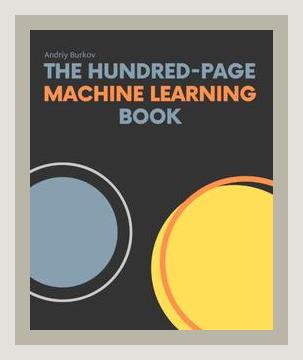Technology and Digital TransformationArtificial Intelligence
Introduction
The Hundred-Page Machine Learning Book by Andriy Burkov, published in 2019, is a comprehensive guide that provides a concise overview of core concepts in machine learning. Divided into well-structured chapters, it covers foundational knowledge, practical applications, and mathematical underpinnings. This summary extracts key ideas and offers actionable steps for readers venturing into machine learning.
Chapter 1: Introduction to Machine Learning
The opening chapter distinguishes between different types and aspects of machine learning, notably:
– Supervised Learning: Involves learning a function from labeled training data. Example: Predicting housing prices based on features like area and number of bedrooms.
– Unsupervised Learning: Deals with unlabeled data, often used for clustering or association. Example: Grouping customers based on purchasing behavior.
– Reinforcement Learning: Focuses on agents learning to make decisions through rewards and penalties.
Actionable Step: Start by identifying the problem type (supervised, unsupervised, or reinforcement learning) to select the appropriate algorithm.
Chapter 2: Mathematical Foundations
Burkov emphasizes the importance of a solid mathematical foundation. Key topics include:
– Linear Algebra and Calculus: Essential for understanding many machine learning algorithms. They provide tools to manipulate high-dimensional data and compute gradients.
– Probability and Statistics: Critical for making predictions and understanding data distributions. Example: Naive Bayes classifiers rely heavily on probability theory.
Actionable Step: Undertake online courses or use textbooks to reinforce your knowledge in linear algebra, calculus, and statistics. Popular choices include Khan Academy or MIT’s OpenCourseWare.
Chapter 3: Key Algorithms and Models
The book extensively covers essential algorithms:
– Linear Regression and Logistic Regression: Used for predicting numerical and categorical outcomes respectively. Example: Predicting whether an email is spam (logistic regression).
– Decision Trees and Random Forests: Decision trees provide interpretability, while random forests reduce overfitting. Example: Using a random forest to predict customer churn.
Actionable Step: Practice implementing these algorithms using Python libraries such as scikit-learn. Start with simple datasets like the UCI Machine Learning Repository.
Chapter 4: Overfitting, Regularization, and Hyperparameters
Burkov introduces critical concepts:
– Overfitting: When a model learns noise in the data. Example: A model performing well on training data but poorly on unseen data.
– Regularization Techniques: Methods like L1 and L2 regularization to prevent overfitting.
– Hyperparameter Tuning: Techniques such as grid search and randomized search for optimal model performance.
Actionable Step: Implement cross-validation and regularization in your models. Use libraries like scikit-learn to explore hyperparameter tuning techniques.
Chapter 5: Gradient Descent
The chapter details the optimization technique:
– Gradient Descent: Used in training models by minimizing the loss function. Variants include batch, stochastic, and mini-batch gradient descent.
– Learning Rate: A key hyperparameter affecting convergence speed and model performance.
Actionable Step: Experiment with different learning rates and gradient descent variants in practice projects. Observe the impact on convergence and model accuracy.
Chapter 6: Unsupervised Learning
Unsupervised learning techniques covered include:
– Clustering Algorithms: Such as K-means and hierarchical clustering. Example: Grouping news articles by topics.
– Principal Component Analysis (PCA): A dimensionality reduction technique to transform high-dimensional data into fewer dimensions. Example: Reducing features in image data for visualization.
Actionable Step: Apply PCA and clustering algorithms on datasets like Iris or MNIST to visualize data and extract meaningful patterns.
Chapter 7: Feature Engineering
Feature engineering is crucial for model performance:
– Feature Selection: Identifying relevant features. Example: Using correlation metrics to discard irrelevant features.
– Feature Transformation: Techniques like normalization and encoding categorical variables.
Actionable Step: Enhance your dataset by performing feature selection and transformation before training models. Tools like pandas and scikit-learn are invaluable here.
Chapter 8: Model Evaluation and Validation
Evaluating models is pivotal:
– Evaluation Metrics: Choice depends on the problem type. Example: Accuracy, precision, recall, and F1 score for classification; mean squared error for regression.
– Validation Techniques: Cross-validation and train-test split to assess model generalizability.
Actionable Step: Regularly validate your models using appropriate metrics and techniques to ensure robust performance before deployment.
Chapter 9: Deep Learning
Deep learning section dives into:
– Neural Networks: Basics of neuron and layer architecture. Example: Using Convolutional Neural Networks (CNNs) for image recognition.
– Popular Frameworks: Libraries like TensorFlow and PyTorch for building and training neural networks.
Actionable Step: Begin with high-level deep learning libraries such as Keras to prototype models quickly. Progress to deeper understanding and customization with TensorFlow or PyTorch.
Chapter 10: Advanced Topics
The book touches upon cutting-edge areas:
– Transfer Learning: Leveraging pre-trained models for new tasks. Example: Fine-tuning a pre-trained ResNet on a medical imaging dataset.
– Generative Models: Such as GANs and Variational Autoencoders (VAEs). Example: Generating realistic images.
– Reinforcement Learning: Training agents in simulated environments. Example: Teaching an AI to play video games via rewards.
Actionable Step: Explore advanced tutorials and research papers to integrate these advanced techniques into your workflow. Platforms like Arxiv and GitHub repositories are excellent starting points.
Conclusion
The Hundred-Page Machine Learning Book by Andriy Burkov condenses a vast amount of knowledge into an accessible summary of critical machine learning concepts. It offers not only theoretical insights but also practical actions a person can take to apply these concepts effectively. The book serves as both a primer for newcomers and a quick reference for seasoned practitioners.
Technology and Digital TransformationArtificial Intelligence
